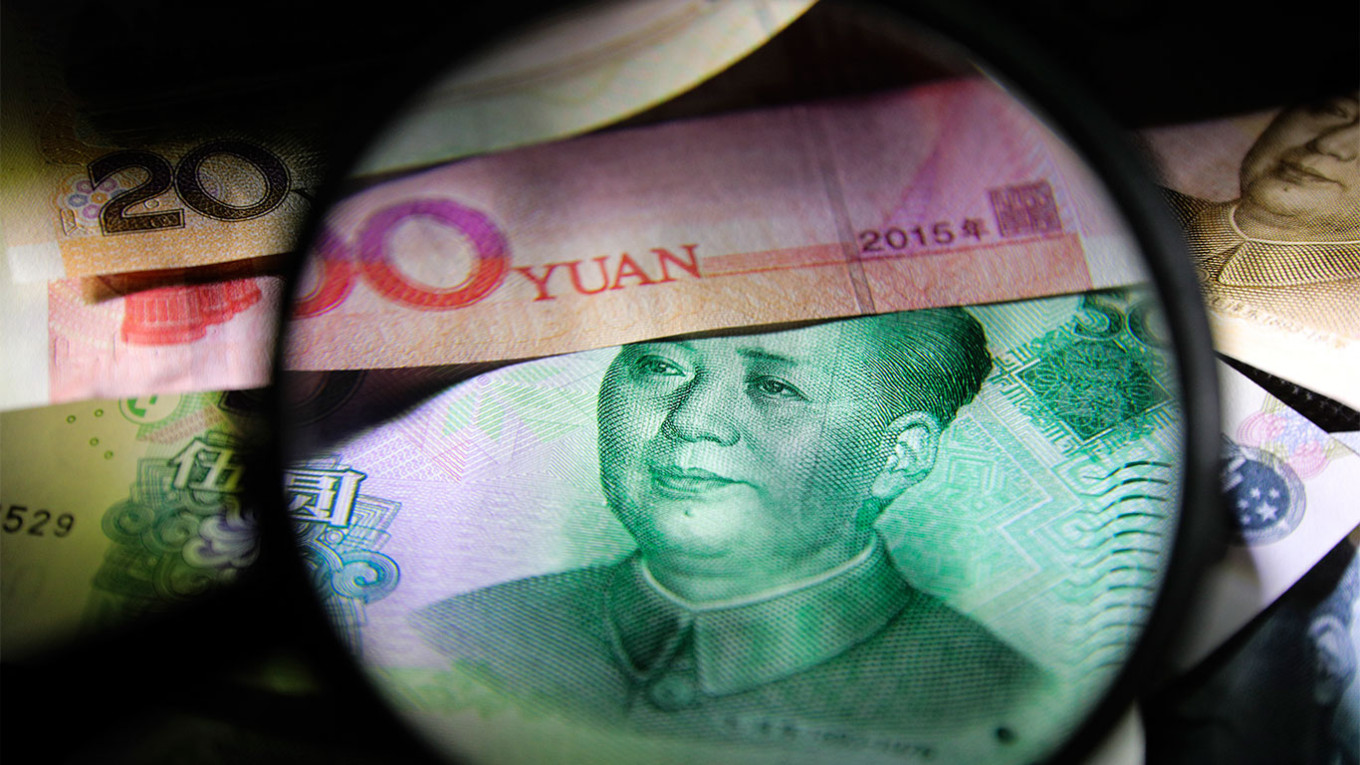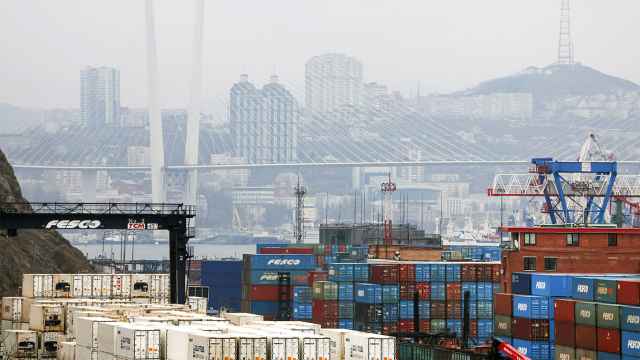One of the biggest problems Russia is currently facing is managing its foreign trade transactions. The country’s main banks have been cut off from SWIFT; the number of transborder transaction channels has decreased drastically; and it has become much harder to conduct transactions in dollars and euros. The government is being forced to look for new ways to arrange payment for Russian imports and exports.
The authorities and businesses have tried switching to national currency transactions, barter deals, cash payments, and other schemes, but were unable to find a comprehensive solution in 2022. Efforts have now clearly shifted to cryptocurrencies and yuan payments, which means the Russian economy will grow increasingly dependent on the Chinese currency, with all the risks such a shift entails.
Even before the war, Russia’s central bank aimed to reduce the country’s dependence on Western currencies, particularly the U.S. dollar. The invasion and subsequent sanctions have forced Russian financial officials to accelerate those efforts: in the third quarter of 2022, the proportion of foreign currency in the Russian banking system fell to an all-time low of 15%. In nine months, the share of dollar and euro transactions on the Russian market declined from 52% to 34% and from 35% to 19% respectively. They have been replaced by ruble and yuan payments, which have seen respective increases of 12.3% to 32.4% and 0.4% to 14%. The yuan’s share in stock market trading has also skyrocketed: from 3%to 33%.
From Jan. 13 to Feb. 6, the Finance Ministry plans to sell foreign currency worth 54.5 billion rubles by tapping into its 3.1-trillion-ruble reserves of yuan liquid assets, which make up over 40% of distributable liquid assets in the National Wealth Fund. It’s still an insignificant sum, which amounts to less than 3% of Russia’s yuan circulation in the last three months. Nevertheless, it will mean reduced volatility for the ruble.
The Finance Ministry also revised the structure of the National Wealth Fund currency component at the end of 2022, doubling its yuan share to 60%. Any surplus oil and gas revenues in 2023 will be accumulated in yuan. The de-dollarization of the economy, which the Russian authorities are so proud of, essentially translates into “yuanization.” Russia is drifting toward a yuan currency zone, swapping its dollar dependence for reliance on the yuan.
This is hardly a reliable substitution: now Russian reserves and payments will be influenced by the policies of the Chinese Communist Party and the People’s Bank of China. Should relations between the two countries deteriorate, Russia may face reserve losses and payment disruptions.
It’s believed that the yuan can’t become a full-fledged reserve currency because of the current restrictions on capital transactions in China. It constitutes just 3% of global currency reserves, overshadowed by the dollar (60%) and the euro (20%). But Russia’s growing dependence on the yuan is helping the Chinese authorities to make it into an international reserve currency. Last October, Russia became the fourth largest offshore trading center for yuan, though back in April it wasn’t even in the top fifteen for offshore yuan users.
Russian politicians often mistakenly claim that the yuan’s international expansion foreshadows the dollar’s collapse. In fact, higher yuan internationalization means that the Chinese government needs more dollar reserves. The Chinese authorities need the U.S. currency to support the yuan’s stability on offshore markets, primarily in Hong Kong. Accordingly, the yuan’s strength as a reserve currency doesn’t weaken the dollar; rather, the two currencies complement each other. This means that Beijing can’t really help Moscow in its crusade against the dollar.
Russian-Chinese cooperation on cryptocurrencies will also intensify. Right now, Russia is just testing cryptocurrency payments for foreign trade transactions, but the central bank plans to develop a model for transborder payments using the digital ruble (a central bank digital currency, or CBDC) this year. There are two options on the table: bilateral agreements on integrating CBDC platforms, or connecting the country to a unified integrated platform.
The first option has a more specific focus, on using the digital ruble to make transborder payments. In this case, international agreements could impose limitations on the payments’ purpose and amount. Under the second option, the platform would have common standards and communications protocols, and that’s what less CBDC-advanced states will adhere to. This second option is quite risky, as foreign fiat-currency-pegged CBDC may attract countries with unstable inflation and currency exchange rates.
Whichever option Russia chooses, China is the only possible partner. The country’s digital transactions through the Alipay and WeChat Pay platforms reached 166.1 trillion yuan ($23.8 trillion) in 2019. In addition, China has been testing the CBDC E-CNY prototype as the third form of money to be used inside the country. As of the fall of 2022, about 140 million Chinese people had E-CNY digital wallets, and their transactions exceeded 62 billion yuan ($9 billion). As the more technologically advanced party, Beijing is likely to establish its own rules for the platform, relegating Moscow to a less important position.
Russian leaders like to emphasize the unprecedented strategic cooperation between the two countries. Yet in reality, this cooperation makes Moscow increasingly dependent on Beijing.
Russia offers a fairly liquid market for Chinese goods, and Western sanctions have made Beijing Russia’s main trade partner. Chinese companies are joining parallel import programs, trying to replace the Western companies that have left the Russian market. Of the 14 brands on the Russian automobile market, 11 are Chinese, for example. Chinese products accounted for 40% of Russian imports of goods at the end of 2020, and only North Korea is more dependent on Chinese imports now than Russia. In addition, the Chinese UnionPay system is the only way Russians can use bank cards overseas.
Contrary to Moscow’s expectations, China has failed to help Russia circumvent sanctions. While not joining the sanctions, Beijing has complied with them. In the future, Russia’s economic dependence on China will only grow, meaning the Kremlin will be forced to reckon with China’s geoeconomic interests, often to its own detriment.
This article was first published by The Carnegie Endowment for International Peace.
A Message from The Moscow Times:
Dear readers,
We are facing unprecedented challenges. Russia's Prosecutor General's Office has designated The Moscow Times as an "undesirable" organization, criminalizing our work and putting our staff at risk of prosecution. This follows our earlier unjust labeling as a "foreign agent."
These actions are direct attempts to silence independent journalism in Russia. The authorities claim our work "discredits the decisions of the Russian leadership." We see things differently: we strive to provide accurate, unbiased reporting on Russia.
We, the journalists of The Moscow Times, refuse to be silenced. But to continue our work, we need your help.
Your support, no matter how small, makes a world of difference. If you can, please support us monthly starting from just $2. It's quick to set up, and every contribution makes a significant impact.
By supporting The Moscow Times, you're defending open, independent journalism in the face of repression. Thank you for standing with us.
Remind me later.








